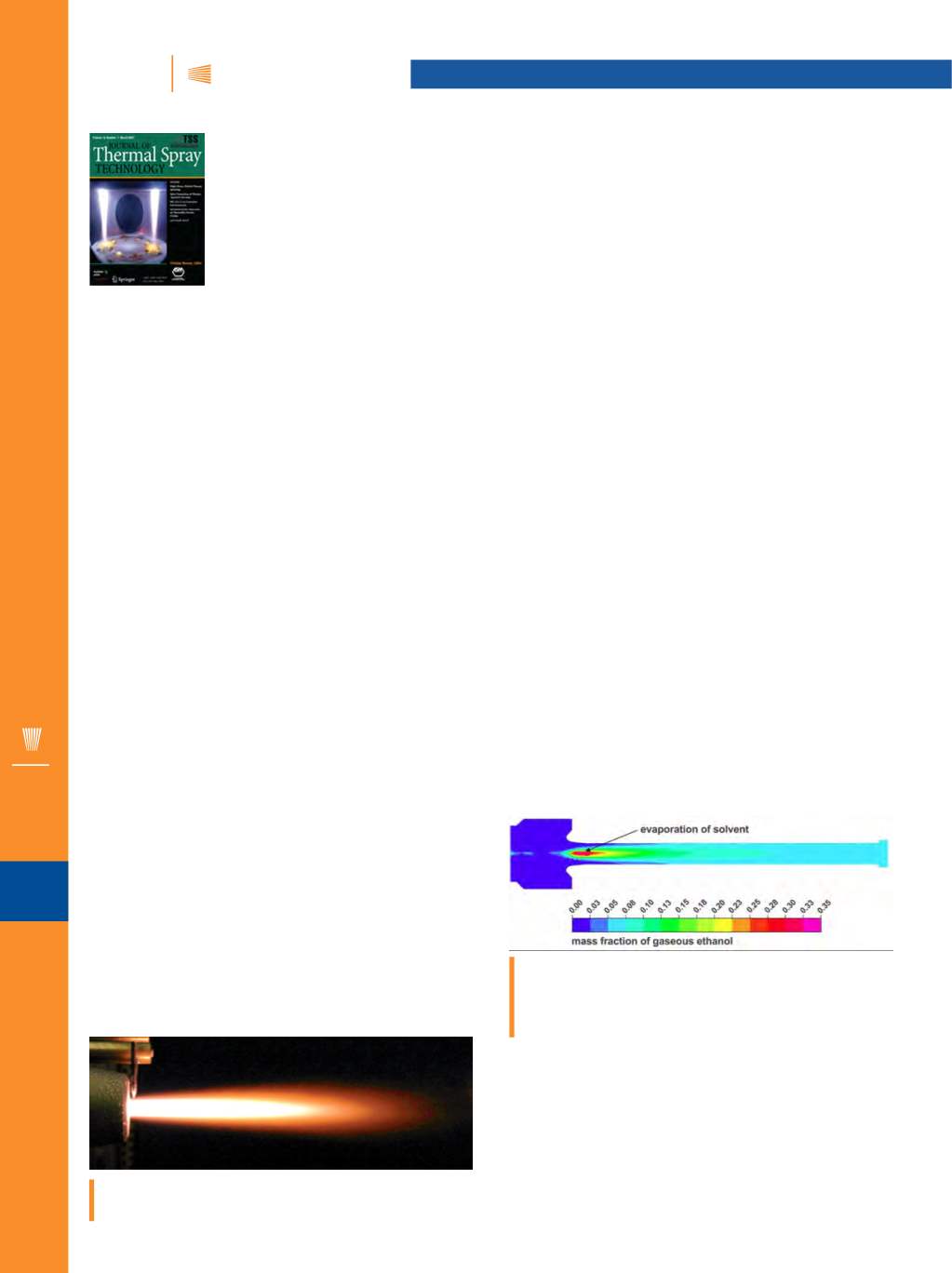

iTSSe
TSS
A D V A N C E D M A T E R I A L S & P R O C E S S E S | N O V E M B E R / D E C E M B E R 2 0 1 5
5 2
iTSSe
TSS
10
JTST
HIGHLIGHTS
The
Journal of Thermal Spray Technolo-
gy
(
JTST
), the official journal of the ASM
Thermal Spray Society, publishes con-
tributions on all aspects—fundamental
and practical—of thermal spray science,
including processes, feedstock manu-
facture, testing, and characterization.
As the primary vehicle for thermal spray
information transfer, its mission is to
synergize the rapidly advancing thermal spray industry and
related industries by presenting research and development ef-
forts leading to advancements in implementable engineering
applications of the technology. Articles from the October and
December issues, as selected by JTST Editor-in-Chief Christian
Moreau, are highlighted here.
The October issue focuses on suspension and solution
thermal spraying. The first four articles highlighted below
are from this issue. The December issue is also a special
issue, featuring the 6th Asian Thermal Spray Conference
(ATSC-6). The last article highlighted below is from that is-
sue. In addition to the print publication,
JTST
is available
online through
springerlink.com. For more information, visit
asminternational.org/tss.“DEMANDS, POTENTIALS, AND ECONOMIC
ASPECTS OF THERMAL SPRAYING WITH
SUSPENSIONS: A CRITICAL REVIEW”
Filofteia-Laura Toma, Annegret Potthoff, Lutz-Michael
Berger, and Christoph Leyens
Advantages of ceramic coatings by using fine powder sus-
pensionas feedstock inAPSandHVOFprocesses includedirect
feeding of fine nano- and submicron-scale particles to avoid
special feedstock powder preparation, the ability to produce
coating thicknesses in the 10-50 µm range, a homogeneous
microstructure with less anisotropy and lower surface rough-
ness compared to conventional coatings, and retention of ini-
tial crystalline phases. This paper discusses the main aspects
of thermal spray with suspensions in order to economically
produce these coatings. The efficiency of the process depends
on availability of suitable additional system components (e.g.,
suspension feeder, injectors), development and handling of
stable suspensions, and high process stability for use at the
industrial scale. There is special focus on the development
and processability of highly concentrated water-based sus-
pensions. While costs and operational safety clearly require
water as the liquid media for preparing suspensions on an
industrial scale, its use is often critically discussed due to the
required higher heat input during spraying compared to alco-
holic suspensions.
“WHAT DO WE KNOW, WHAT ARE
THE CURRENT LIMITATIONS OF
SUSPENSION HVOF SPRAYING?”
A. Killinger, P. Müller, and R. Gadow
Suspension spray has evolved during the past decades
and now is at the threshold of commercial use. Compared to
standard powder spraymethods, mainly DC plasma spray and
high velocity flame spray, it is clear that suspension spray will
not replace these well-established technologies. However, it
can extend them by adding new coating properties. But first,
many issues need to be solved. Suspension interaction with
the hot gas stream is much more complex than in ordinary
powder spray processes. In the case of HVOF, when an axial
is injected into the combustion chamber, it is not possible to
directly observe the liquid flame interaction. This paper dis-
cusses the current status of high velocity suspension flame-
spray including torch concepts, torch configuration in case
of a TopGun system, and different injector concepts and their
influence on suspension atomization. The role of suspensions
regarding their rheological and thermodynamic properties is
examined, mainly given by the solvent type and the solid con-
tent. An overview of different available diagnostic methods
and systems and their respective applicability is provided.
Coating properties are shown and discussed for several oxide
ceramics in respect to their possible applications.
Color of the HVOF flame during spraying of suspensions starting
from an Al
2
O
3
powder with alkali impurities.
CFD simulation of mass fraction contour of gaseous ethanol
in HVSF-spray process using a standard combustion chamber
geometry of a TopGun. Evaporation occurs at the expansion
barrel entrance.
“MICROSTRUCTURAL ANALYSIS OF
COLD-SPRAYED TI-6AL-4V AT THE
MICRO- AND NANO-SCALE”
A.M. Birt, V.K. ChampagneJr.,R.D. SissonJr., andD. Apelian
The microstructure of cold sprayed Ti-6Al-4V is different
than any structure resulting from any other processing tech-
nique. The unique characteristics are derived from the solid


















